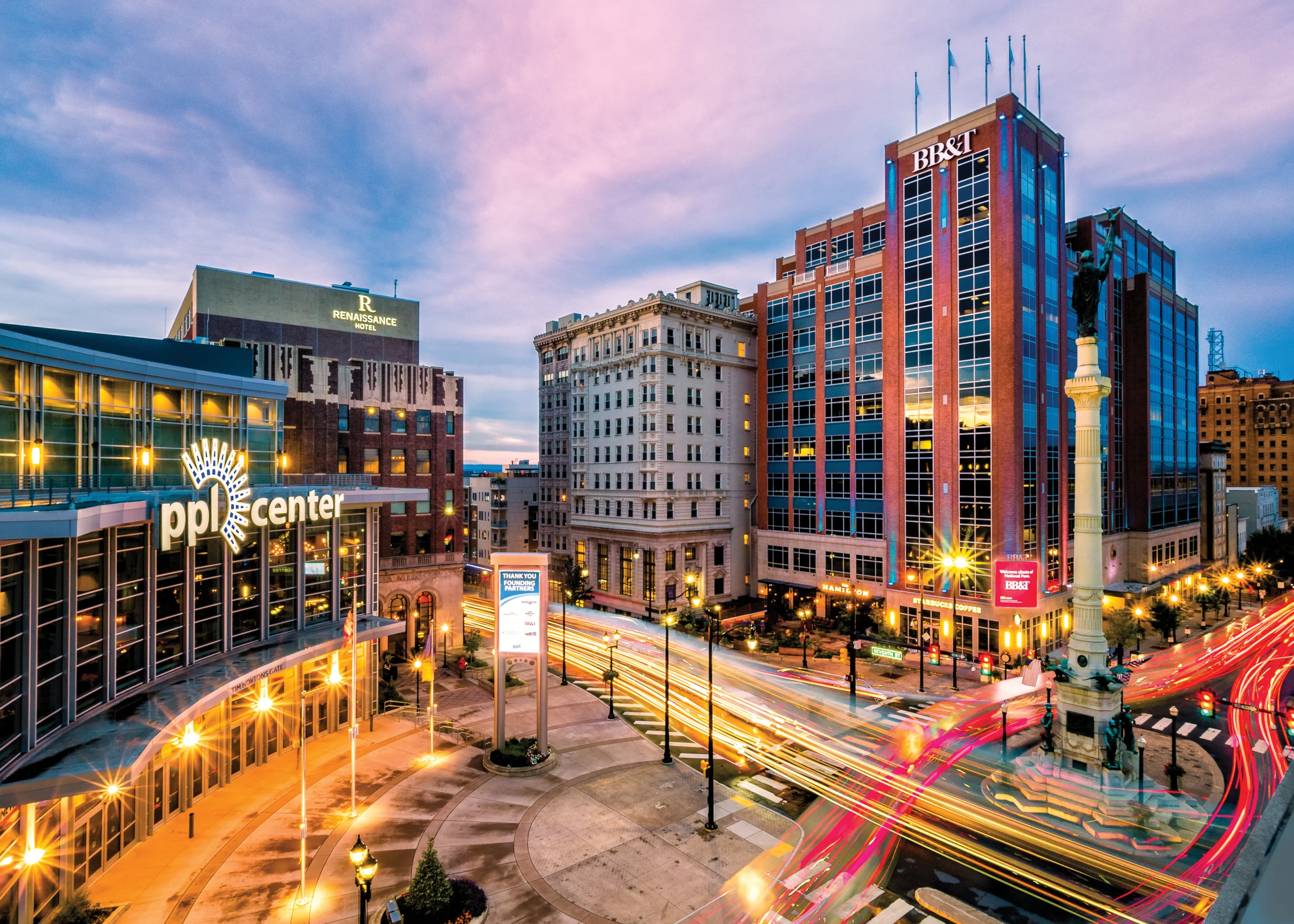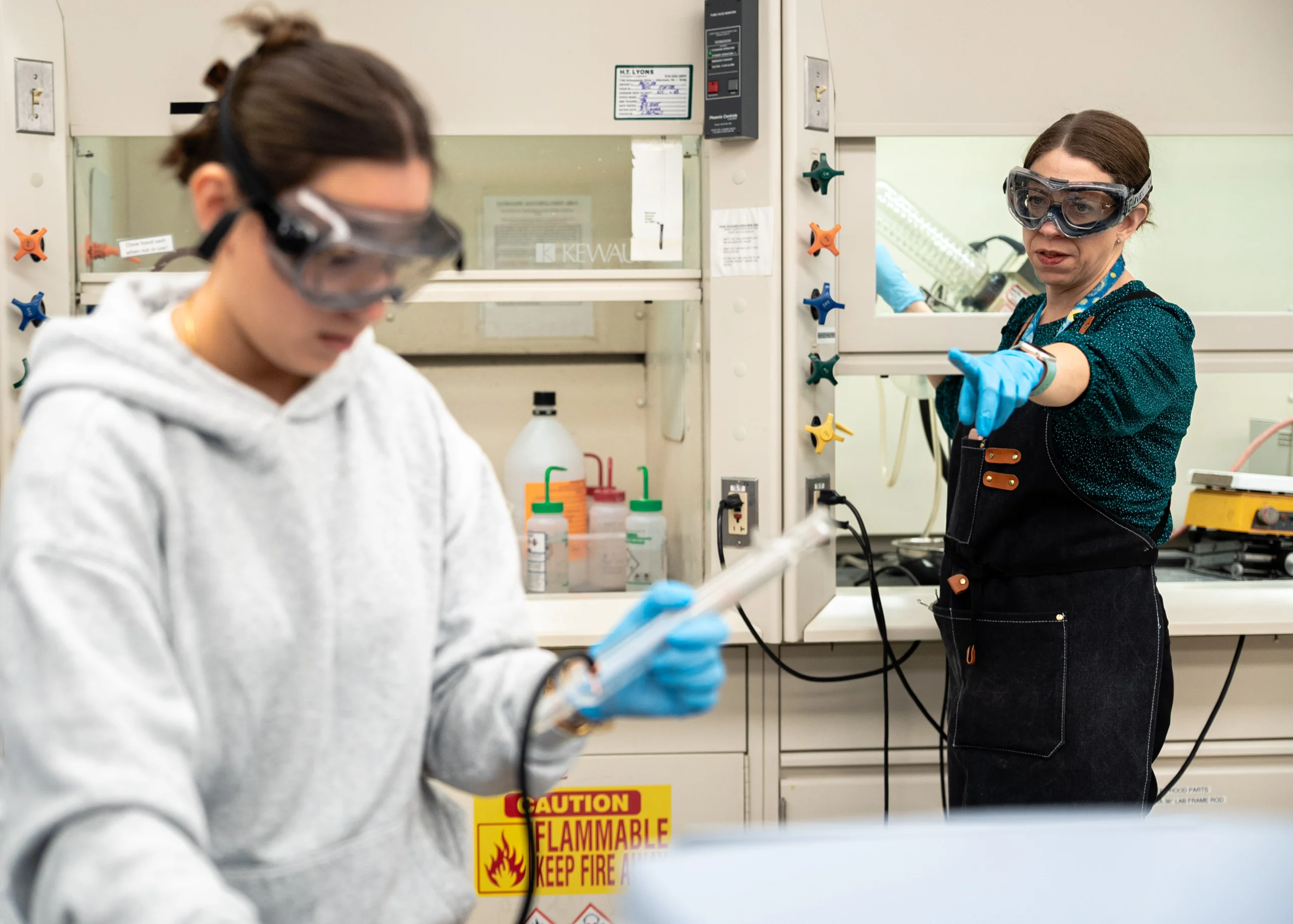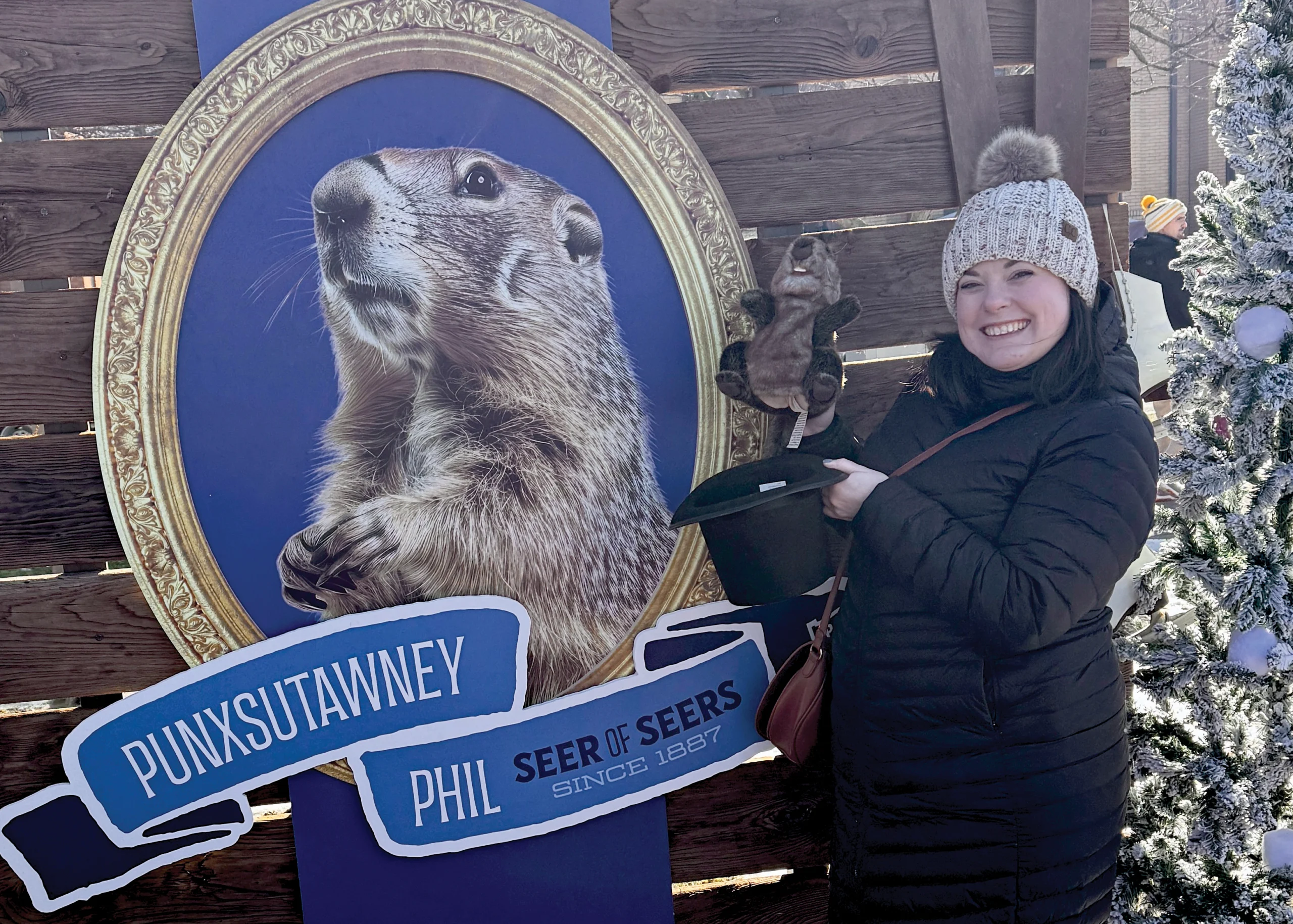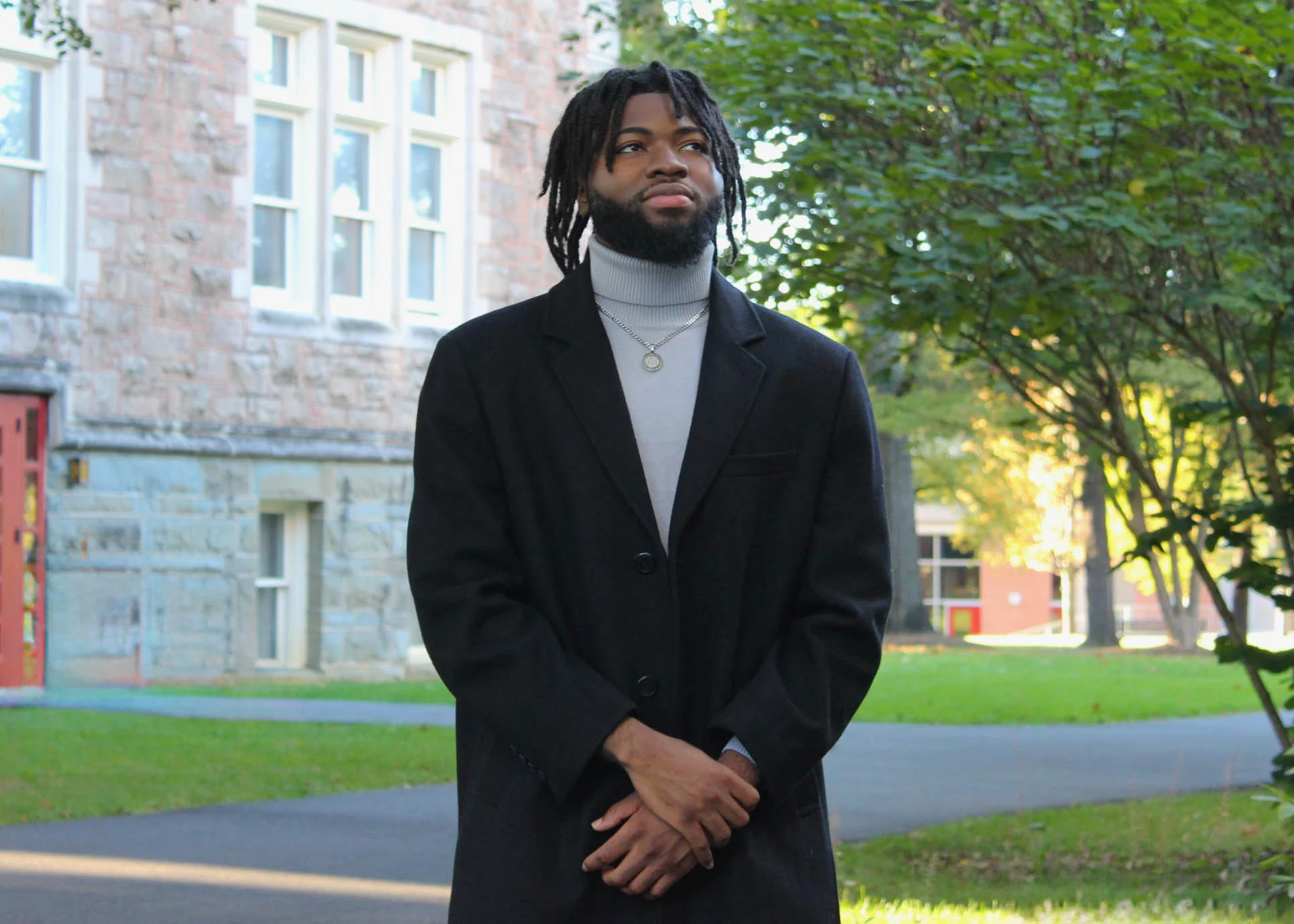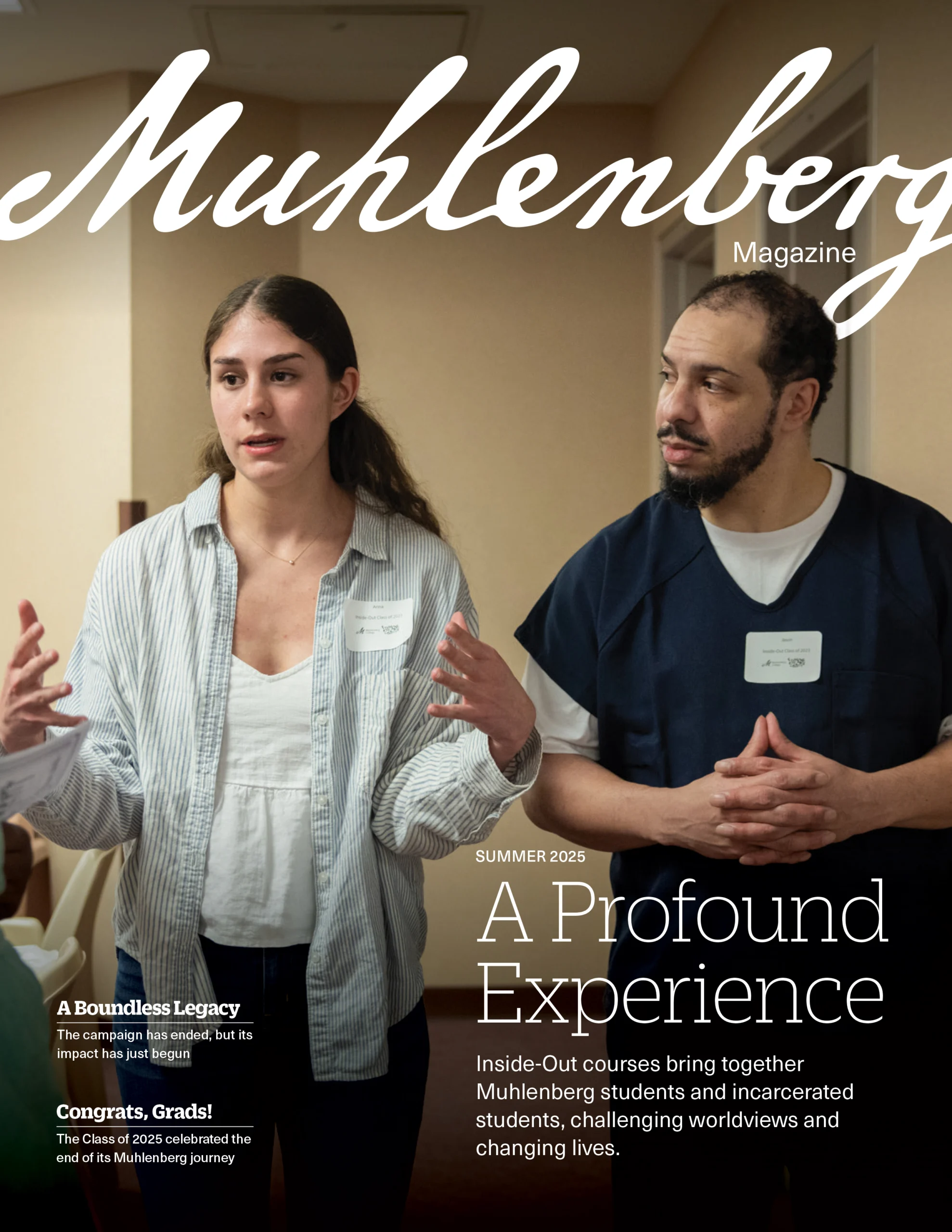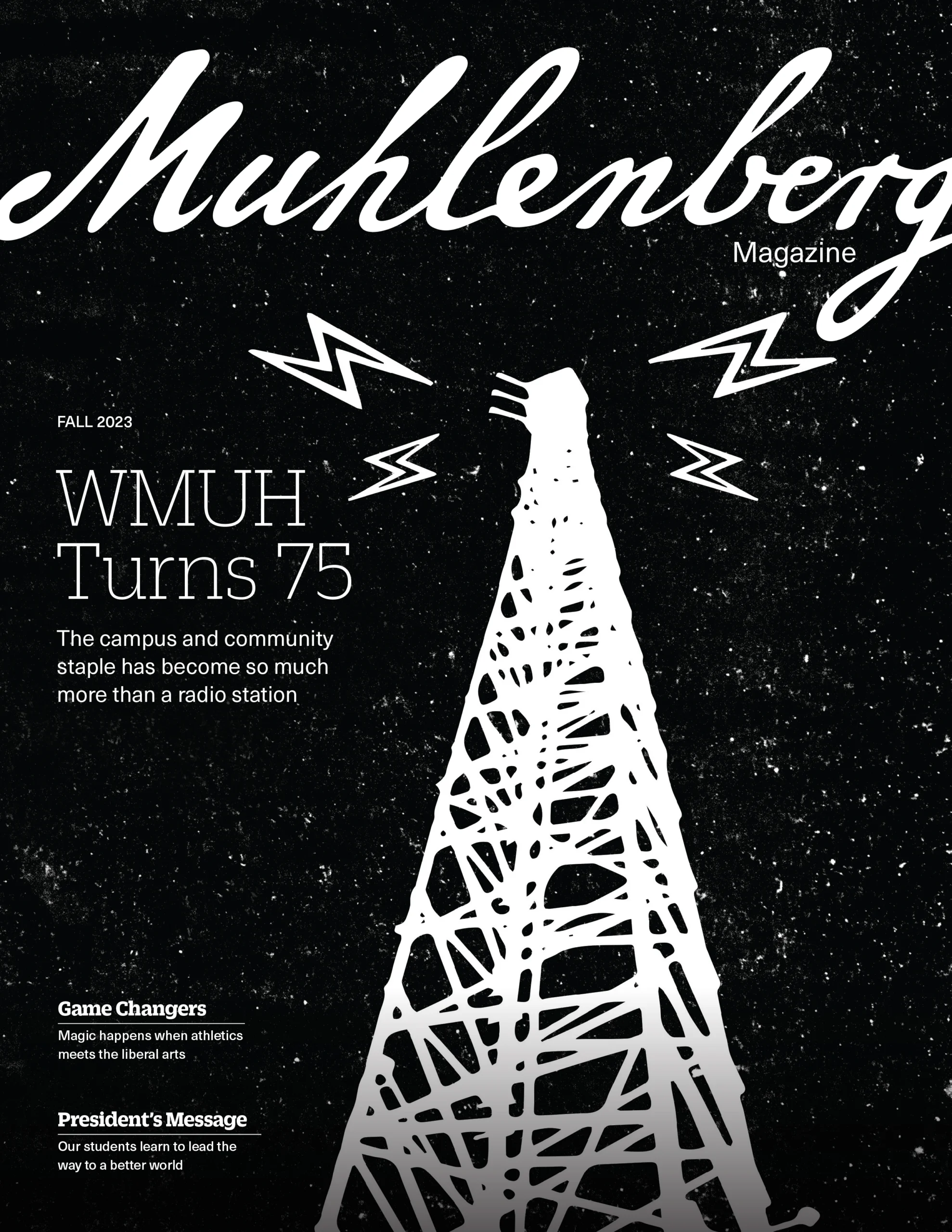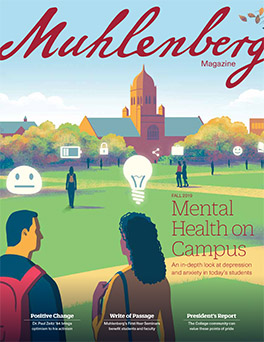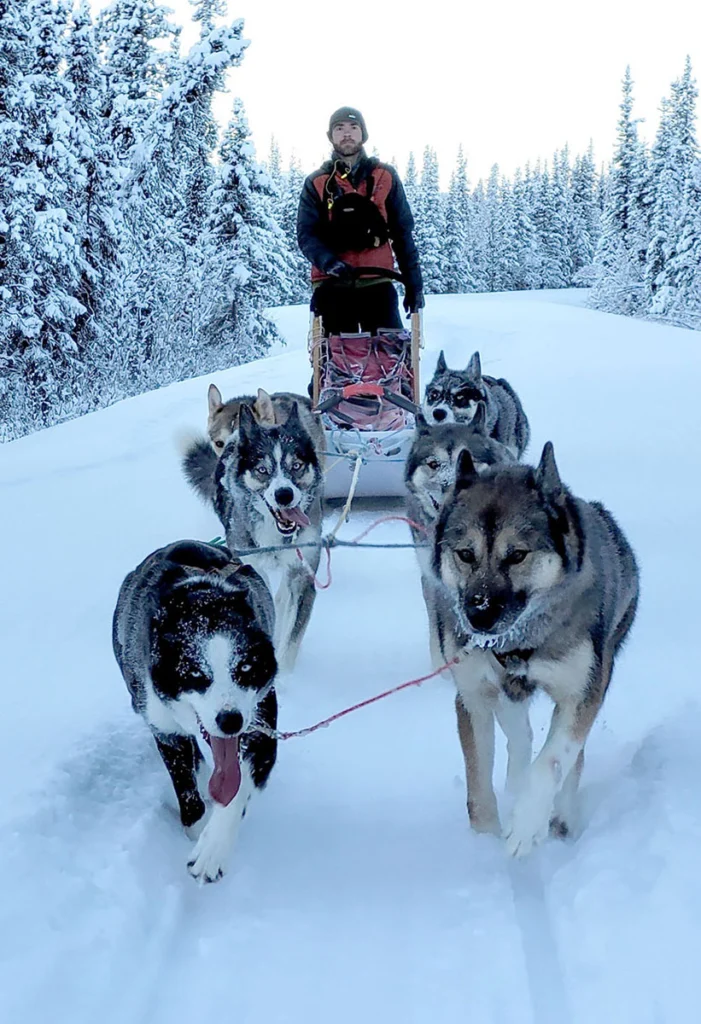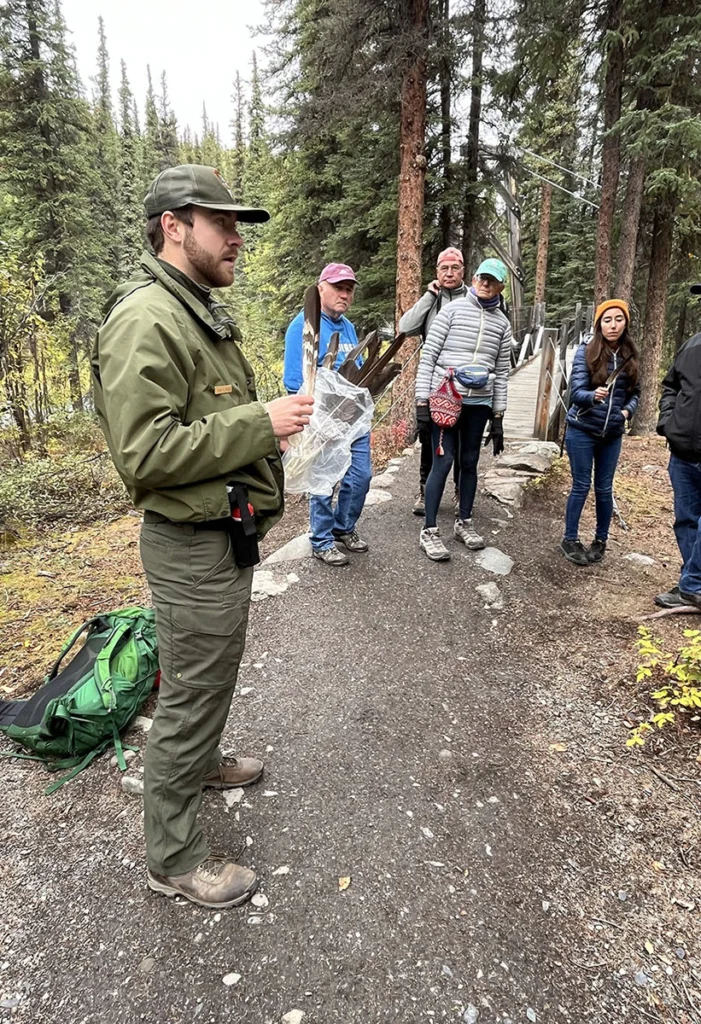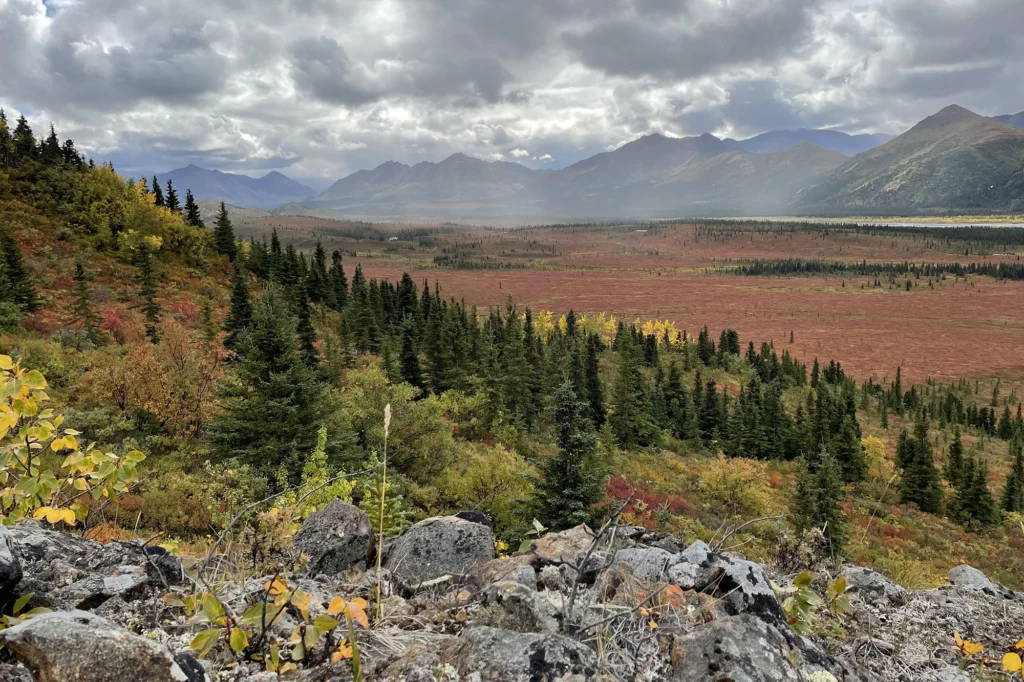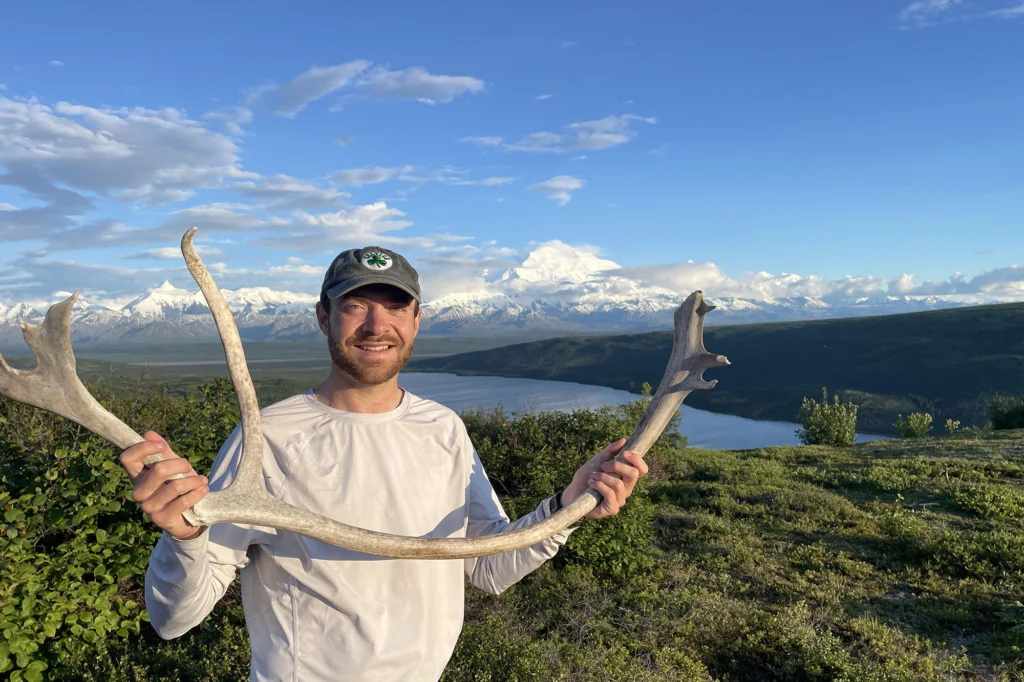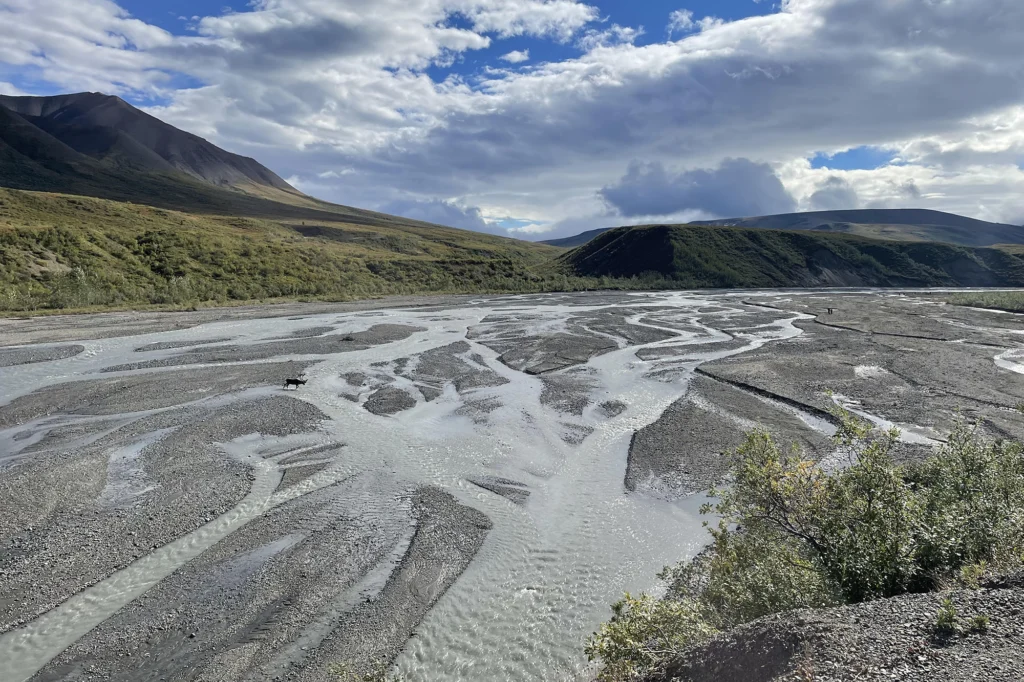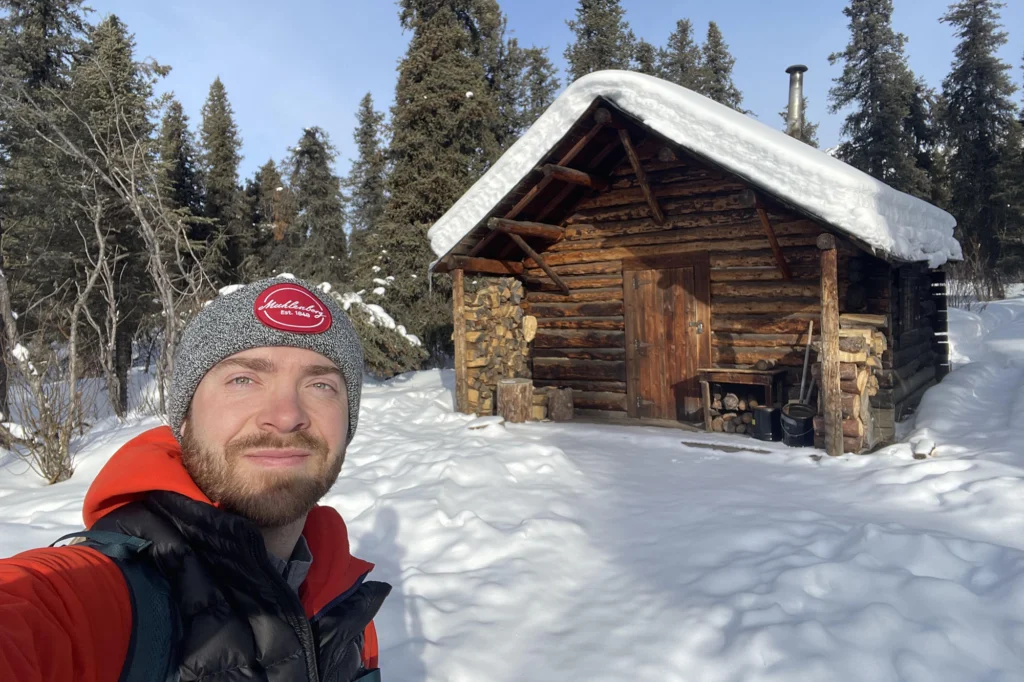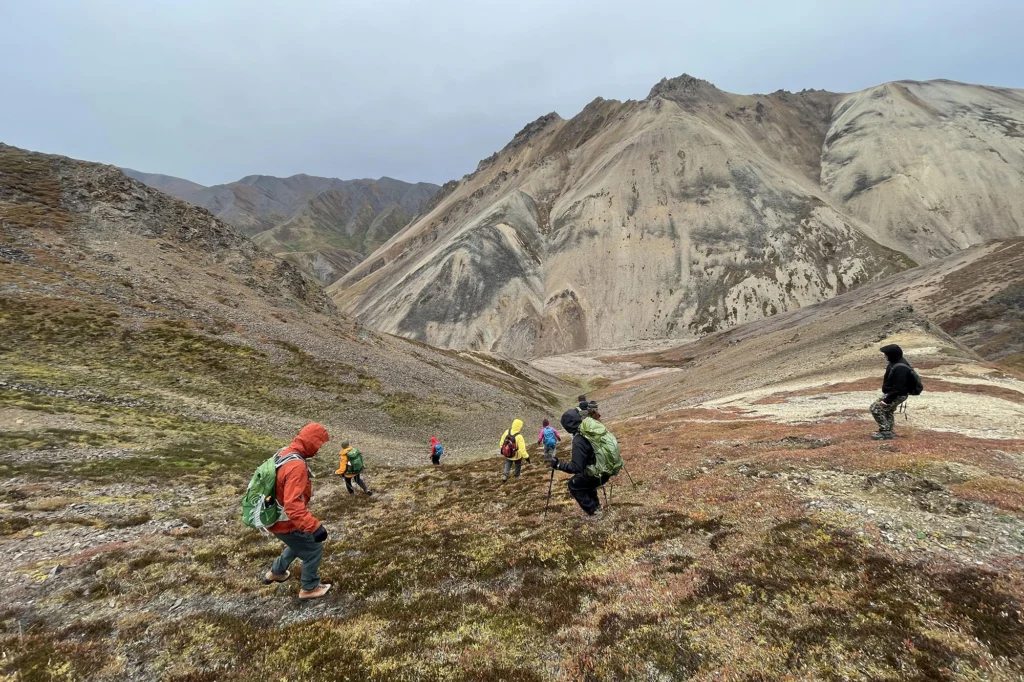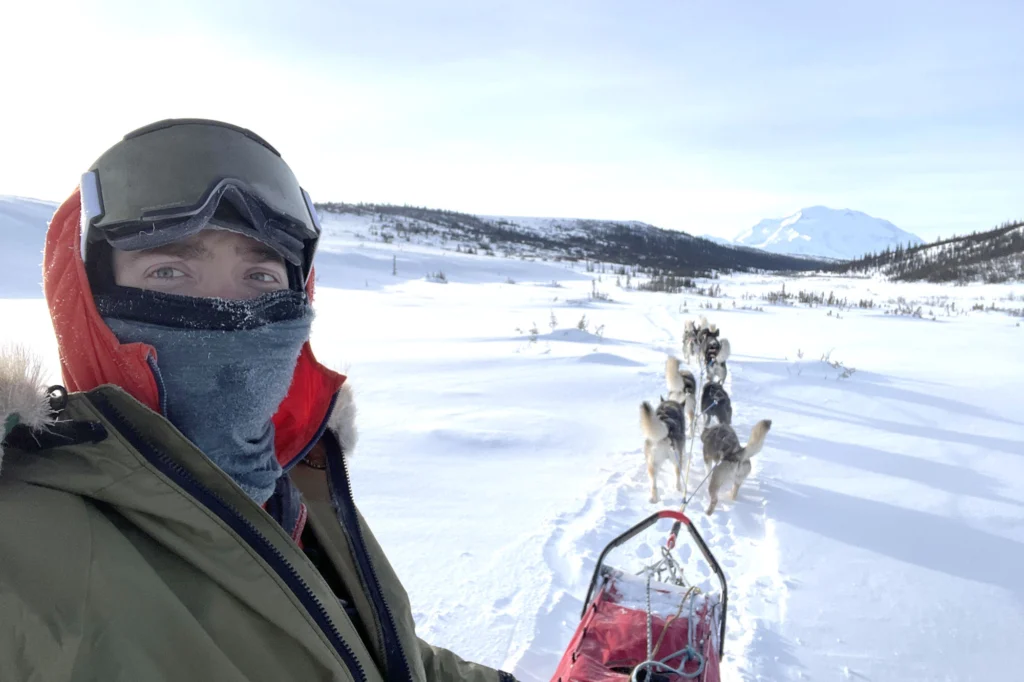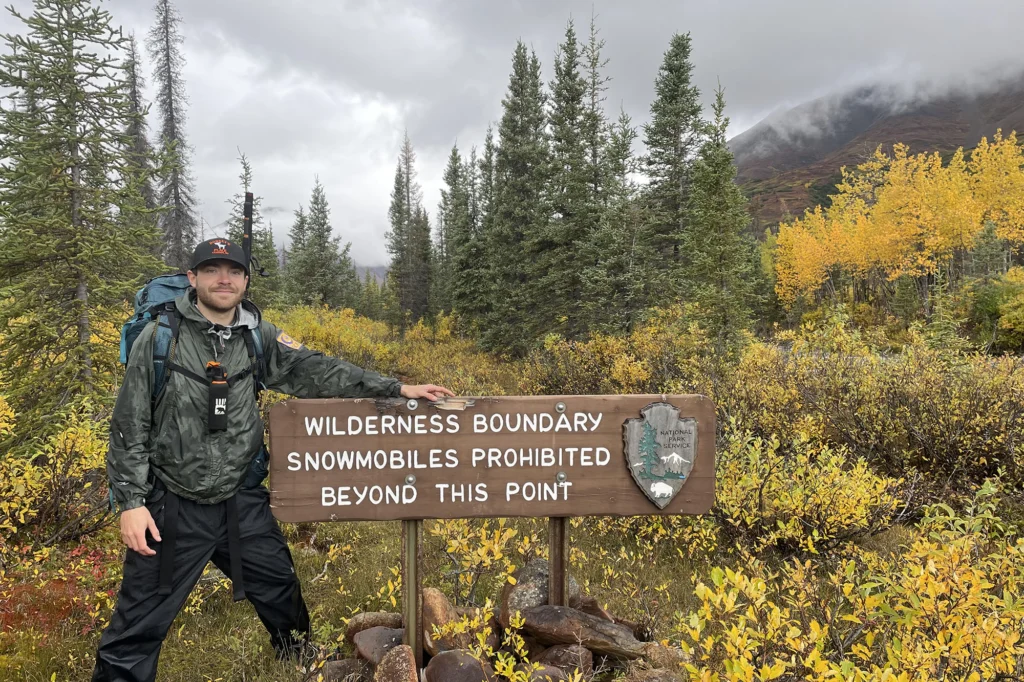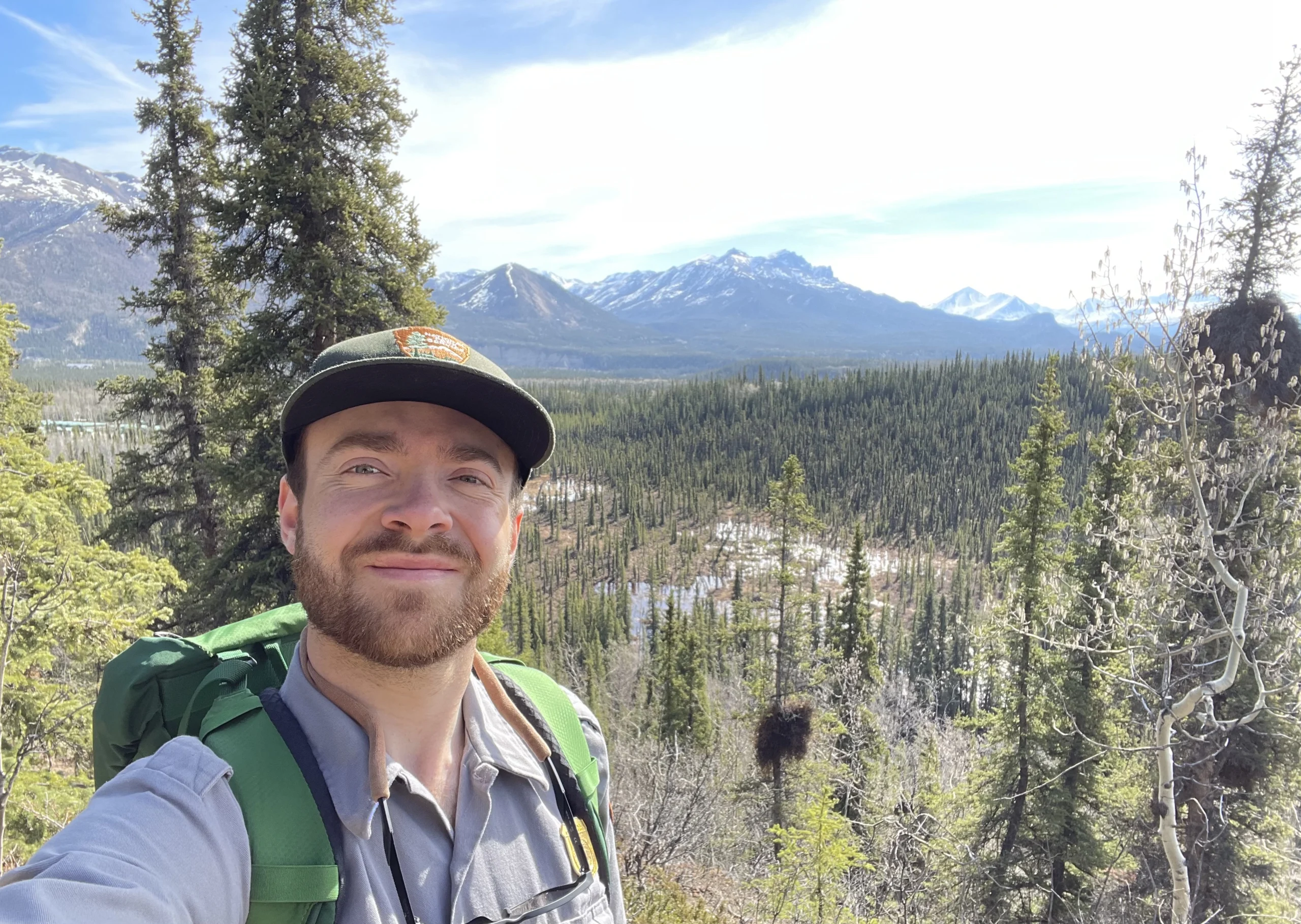
I Live and Work in Alaska’s Denali National Park and Preserve
As a park guide, I host educational programs, lead hikes, help maintain the park’s social media presence and spend all year in this extreme environment.
Chris Grahn ’20, a film studies and media & communication double major from New Jersey, grew up visiting public lands. At Muhlenberg, he was part of the Outdoors Club. And now, he’s one of six park guides at the Denali National Park and Preserve in Alaska. He began working at the park in February 2022 and began the full-time, permanent role he’s in now in March. Here, he describes what it’s like to live and work in this remote wilderness.
We get thousands of visitors every summer. In the summer season, I’ll lead hikes with visitors in the morning and afternoons. We provide sled dog demonstrations on a daily basis, which are unique to this park. And we give educational talks, which continue year-round through distance-learning programs that reach across the United States and beyond. The park guides also run Denali’s social media pages, which we maintain all year.
In one of my educational programs, I talk about migratory birds and their long-distance travels to this massive expanse in the interior of Alaska. My senior year, I took Biology of Birds with Professor of Ornithology and Conservation Biology Dan Klem, and he opened my eyes to a whole world of birding. I talk about him in my program — he published a book about bird-window collisions, and across the country, the national parks are working to establish new bird-friendly buildings.
“I took Biology of Birds with Professor of Ornithology and Conservation Biology Dan Klem, and he opened my eyes to a whole world of birding. I talk about him in my program.”
You can find about 180 species of birds in the park. My favorite are the golden eagles. Also, the blackpoll warblers — in winter, they travel to Venezuela. The arctic terns go all the way down to Antarctica and cover 25,000 to 50,000 miles round-trip every year just to get out to this remote location. Denali offers a great breeding habitat for migratory bird species from all over world.
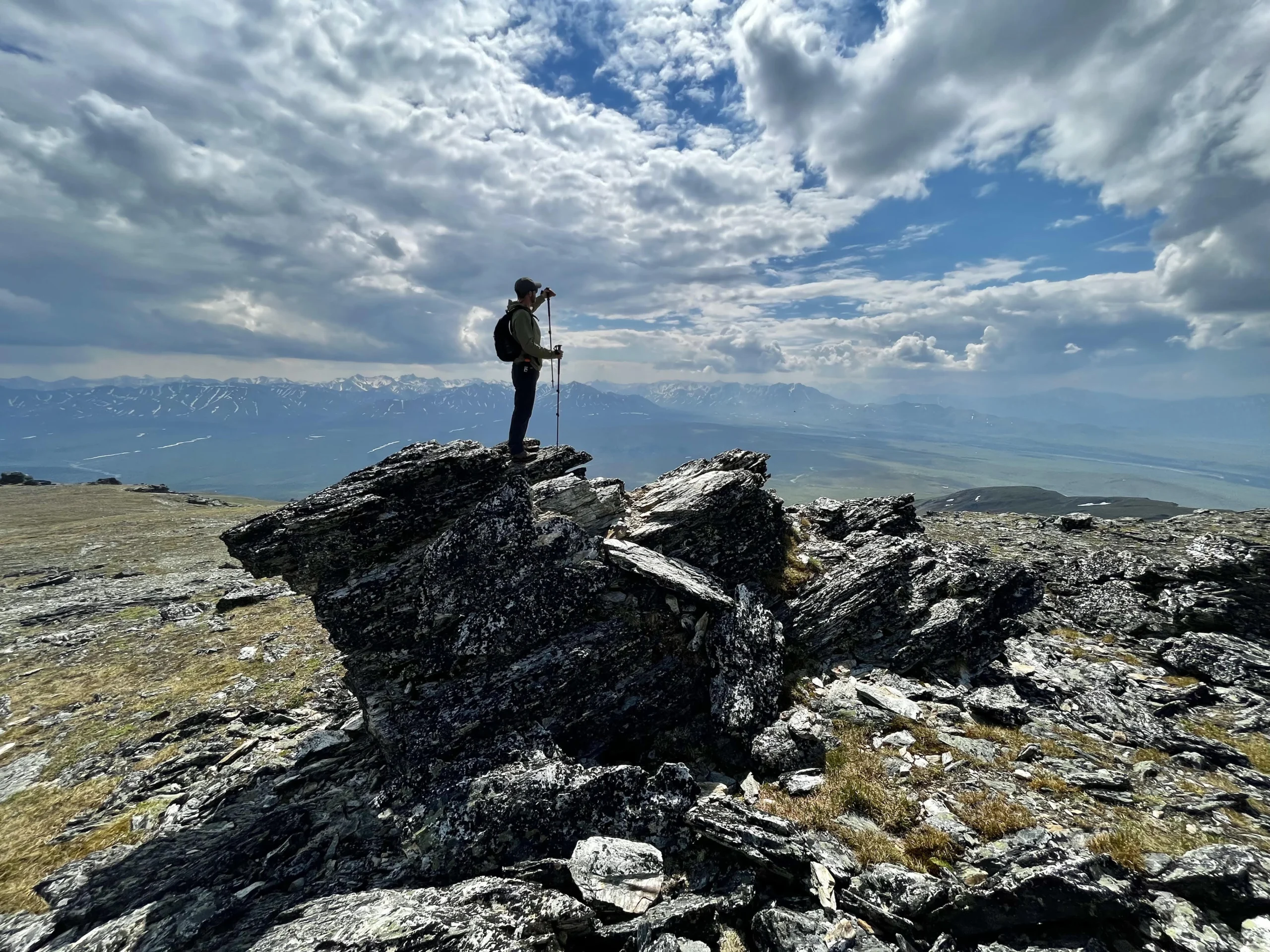
Within the park there are 39 mammal species that call Denali home. Moose are very common: Some mothers are dropping their calves right now and hanging out near headquarters, so you have to look left and right when you walk out your door in the morning. Dall sheep can be found on various mountain tops throughout the Alaska Range. Grizzly bears like to hang out in the tundra and right off the road, foraging for berries. Right now, we’re getting caribou migrating into the park from the far north.
“Once the winter solstice comes around in December, we have about four to five hours of daylight, and that is starkly different from our summer, which is sunlight from 3 a.m. to midnight.”
My partner and I have permanent housing in the park, right by the superintendent’s office. We moved in March. Before that, we were living about 10 miles south of the park entrance in a dry cabin — that’s really common out here, to have no running water. Our wood stove was utilized many times throughout the winter. We had some pretty frigid days, to say the least. We hit right around negative 50 [degrees Fahrenheit]. You can’t even walk outside without your hair freezing up.
You have to be prepared to thrive in the darkness, too. Once the winter solstice comes around in December, we have about four to five hours of daylight, and that is starkly different from our summer, which is sunlight from 3 a.m. to midnight. You do get a lot of variety, but you’ve got to roll with the punches and be prepared for anything out here.


